We hope that each of you, our readers, will enjoy and appreciate this article we present about these 7 Magical North American Moths. It was certainly our pleasure to compile the information for you. May it provide you with both education and increased awareness.
These few species listed herein represent only a portion of the natural wonders found throughout the region, though. Yet, it’s our belief that they serve as excellent representations of the wonders found here. Check out some of our other articles for similar marvels.
Hemlock Looper
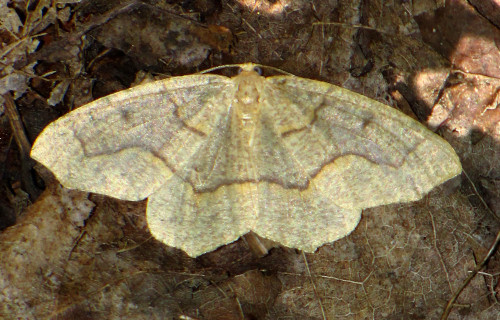
Hemlock Looper Facts
- Leading off this article about 7 Magical North American Moths is the remarkable creation of Nature known best as the Hemlock Looper.
- This delicate marvel of Nature, an excellent example of native Lepidoptera, most frequently goes by the common name that we’ve used here. The invertebrate also has another, though less used common name. That’s the term of the mournful thorn.
- Professionals, however, typically refer to it by yet another name. That’s the technical name for the small species. Unfortunately, however, like many such terms, its’ rather hard to pronounce. That’s due to the fact that it’s also called the Lambdina fiscellaria.
- The respected French entomologist, Achille Guenée, assigned this tonge-twisting formal name. He made the first known official recognition of the insect as a separate and distinct species. This scientifically noteworthy event further occurred in 1857.
- Regrettably, though, in some parts of its native range, it’s viewed as a serious pest. That holds true due to the feeding habits of its caterpillar form. When present in sufficient numbers, these pose a serious threat to several varieties of trees in local area.
- For the moment, this impressive invertebrate appears to be maintaing a population base that’s both sizeable and stable. This also seems to hold tue throughout the entirety of its natural range. The IUCN, therefore, presently has no listing for it on its Red List.
- The Hemlock Looper nevertheless should be considered as facing several threats to its continued existence. Habitat loss, chiefly due to human activities, naturally constitutes a potential danger. Its greatest threat, however, comes from climate change.
Hemlock Looper Physical Description
The appealing Lepidoptera known by the attention-grabbing common name of the Hemlock Looper garners some attention due to its dietary habits, to be sure. Yet the remarkable insect also merits its own degree of appreciation due to its sheer visual appeal, too.
It further manages to earn a certain degree of appreciation for its natural beauty alone. Its physical size isn’t a factor in that particular aspect. That’s because it remains only an average-sized specimen of its kind, unlike some giants, like the Giant Atlas Moth.
More specifically, mature adults of the species possess an average wingspan of roughly 1.4 in (3.5 cm). Exceptional individuals do occur occasionally, of course. These uncommon specimens, however, rarely exceed this measurement by more than a small fraction.
Unlike many of its relatives, though, the Hemlock Looper displays no noticeable degree of the physiological characteristic of sexual dimorphism. This lack of distinguishing traits between the genders further includes both sheer size and physical appearance.
Adults of both genders therefore present the same general pattern of colors, as well as size. This principally manifests as a cream colored background over most of the body and wings. Thin, dark lines, however, generally also cross both the forewings and hindwings.
- Kingdom: Animalia
- Phylum: Arthropoda
- Class: Insecta
- Order: Lepidoptera
- Family: Geometridae
- Genus: Lambdina
- Species: L. fiscellaria
Hemlock Looper Distribution, Habitat, and Ecology
Fortunately, both for the Hemlock Looper itself, and those of us who appreciate Nature, it evolved as native to a relatively wide section of the globe. That’s due to the fact that the Arthropod evolved as native to much of the continent of North America.
Within that vast area, though, its range extends as far north as the southern portions of the country of Canada. From there, it makes appearances throughout the United States. The range of the small moth does not, however, extend into the country of Mexico.
In both of the countries on the continent that it does appear in, though, the great majority of its numbers tend to live in the eastern half of the continent. In all regions, however, the creature typically makes its home in areas of either coniferous or deciduous forests.
Although the caterpillar froms feed on virtually every variety of tree in their habitat range, they do show certain preferences. As the common name implies, though, these show a strong preference for hemlock trees. Yet they consume most others, as well as some shrubs.
Other than hemlock trees, the favorite food sources of the caterpillar form includes such indigenous tree species as white spruce, oak, and balsam fir. The mature adults, meanwhile, like many of their relatives, feed on the nectar of various local plant species.
The adult Hemlock Looper typically flies between August and early October, in most instances. After mating, the female lays large numbers of eggs, usually either in small groupings, or even singly. These she further places on bark, twigs, foliage, or even debris.
Eight-Spotted Forester Moth
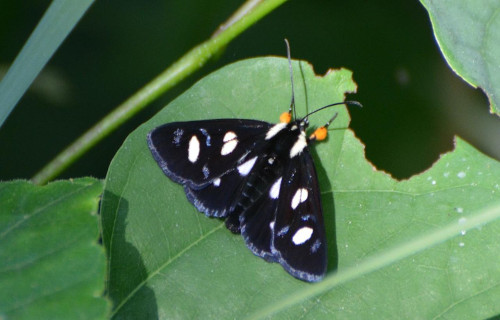
Eight-Spotted Forester Moth Facts
- Next up in this compilation of 7 Magical North American Moths is the unique invertebrate named the Eight-Spotted Forester Moth.
- This magnificent Lepidoptera is most commonly referred to by the somewhat cumbersome term due to the nature of its appearance. For the moment, unlike many of its related species, this marvel has no other generally accepted common name.
- Professional researchers, meanwhile, typically refer to the insect by its official scientific name. That term, however, doesn’t really roll off the tongue much more easily. That’s because it’s scientific name is the equally hard to pronounce Alypia octomaculata.
- The Arthropod received that name at the hands of the renowned Danish researcher Johan Christian Fabricius. The respected zoologist made the first formal recognition of it as a separate and distinct species. That noteworthy even occurred in 1775.
- This beautiful insect holds a better position than many. For the moment, this marvel of Nature appears to be maintaing a population base that’s both sizeable and stable. This further appears to hold true throughout the entirety of its natural range.
- The IUCN, therefore, currently has no listing for the Eight Spotted Forester Moth. Any such status would be reflected on the organization’s Red List of Threatened Species. That fortunate situation, however, could potentially change in the very near future.
- That’s due to the fact that, like most species, if not all, it faces potential threats to its existence. One of those consists of habitat loss, due to human expansion and activities. Its greatest potential threat, though, likely comes from ongoing climate change.
Eight Spotted Forester Moth Physical Description
The fabulous Eight Spotted Forester Moth actually often passes for a butterfly, among the non-professionals who encounter them. Indeed, the amazing invertebrate strongly resembles its cousins in terms of both behavior and general physical appearance.
Although it’s a truly impressive species, it doesn’t earn that accolade based on sheer physical size. That’s because it’s an average-sized member of its genus. It also displays no discernible amount of the physiological characteristic known as sexual dimorphism.
Individuals of both genders therefore appear virtually identical to the naked eye. In terms of size, mature specimens attain an average wingspan of roughly 1 – 1.5 in (2.5 – 3.8 cm). Exceptional individuals do occur, of course, but these remain extremely uncommon.
The overall coloring of adult examples of the Eight Spotted Forester Moth remains principally black. Various parts of the wings do, however, display small variations in this pattern. The body, meanwhile, generally remains almost entirely black in coloring.
The wings of the Arthropod, though, do show some spots of color. Each forewing manifest two light yellow spots. The hindwings also each display two spots, these being white in color. Patches of bright orange hairs also develop on both the front and middle pair of legs.
- Kingdom: Animalia
- Phylum: Arthropoda
- Class: Insecta
- Order: Lepidoptera
- Family: Noctuidae
- Genus: Alypia
- Species: A. octomaculata
Eight Spotted Forester Moth Distribution, Habitat, and Ecology
Regrettably, the stunning Eight Spotted Forester Moth inhabits a moderately restricted swathe of the globe. That range also has a highly broken nature to it. For the moment, no evidence exists to indicate that it ever possessed a more extensive range.
This inspiring creation of Nature and evolution evolved as native to a limited portion of North America. Its population mainly appears in the eastern portion of the United States. Smaller groupings, though, also appear in parts of the countries of Canada and Mexico.
Even within its native range, this Lepidoptera has very specific requirements for its choice of habitat. The vast majority of adults appear in the narrow zone where wooded areas meet open areas. This unique placement serves to meet two of its principal needs.
That’s due to the dietary needs of both its adult and larval forms. The open areas provide the adults with quantities of flowers, from which they feed on the nectar they require. The larva, meanwhile, find the specific plants upon which they feed in the wooded areas.
Adults of the Eight Spotted Forester Moth most commonly appear in the Spring. In warmer regions, two lifecylces occur per year. The dense, forested regions also provide the adults with sufficient foliage for the laying of their eggs, typically under the leaves.
This natural wonder truly stands out from most of its relatives due to its behavioral patterns. That’s due to the fact that, unlike most moths, it flies during the daytime. Its feeding activities further serve as a source of pollination for the many various flowers in its area.
Calleta silkmoth
Calleta silkmoth Facts
- The next species we selected for inclusion in this listing of 7 Magical North American Moths bears the distinctive name of the Calleta silkmoth.
- The amazing invertebrate with the somewhat unusual common name remains a truly beautiful variety of the Order Lepidoptera. This truly awesome invertebrate species also holds a few surprises for those who attempt to learn more about it.
- That’s because this simply fascinating creature actually stands out in several very specific ways. Firstly, this breathtaking insect represents the sole member of its scientific genus, named Eupackardia. That alone distinguishes it from many of its peers.
- The renowned British entomologist John O. Westwood, furthermore, became the first person to officially describe this variety of moth. That original description of this species, with the scientific name of Eupackardia Calleta, occurred in the year 1853.
- Secondly, this beautiful form of moth has also long played a key role in certain cultures in its range. That’s because several Native American tribes, such as the Yacqui, historically used its cocoons in the making of ankle rattles and medicinal necklaces.
- These constructions routinely played a part in some of the important ceremonies in their culture. That’s not the end of things, though. Thirdly, and also regrettably, the marvelous Calleta silkmoth appears to have an extremely restricted habitat range.
- Within its range, though, its population appears to be sufficient and stable, at least for the moment. The IUCN therefore has no listing for the moth. It can be nevertheless be considered to be facing the threat of climate change, like many other creatures.
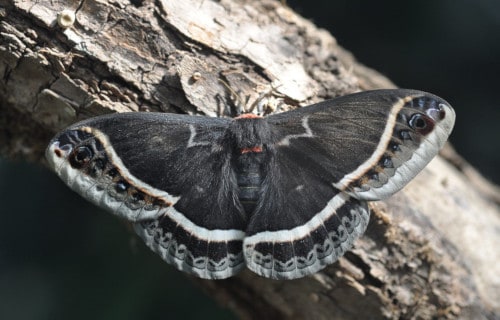
Calleta silkmoth Physical Description
The gorgeous species known as the Calleta silkmoth remains well-known for more than just its great beauty. That’s because, among other factors, it’s also a moderately large type of moth. In addition, like many insects, this species displays the trait of sexual dimorphism.
In the case of this Lepidoptera, however, the physical differences between the genders presents itself in terms of appearance. This holds true due to the fact that mature adults of both genders of this arthropod attain a wingspan that averages about 3.15 – 4.3 in (8 – 11 cm).
Both sexes, furthermore, display the same basic color pattern, with only slight differences. The body remains almost entirely black. The exception is the presence of a small red collar and some red coloring on the rear portion of the large thorax of the invertebrate.
Next, the basic background of the wide and deep wings of the Calleta silkmoth primarily presents as a deep black. But, post-median lines also cross both of the wings. These features are what comprises the visual differences in the genders.
That’s because those of the female tend to be somewhat different from those of the male. More specifically, these usually develop as slightly wider than the male. Some individuals of either sex, meanwhile, sometimes display large rectangular spots of white.
- Kingdom: Animalia
- Phylum: Arthropoda
- Class: Insecta
- Order: Lepidoptera
- Family: Saturniidae
- Genus: Eupackardia
- Species: E. callata
Calleta silkmoth Distribution, Habitat, and Ecology
Quite unfortunately, the native habitat range of the truly awesome Calleta silkmoth remains limited to only a tiny portion of North America. More specifically, that naturally restricted range only includes small portions of two countries in the region.
That’s because it appears in both Mexico and the United States. It appears in Guatemala, in Mexico, and the states of Texas, Arizona, and New Mexico. Given the nature of its habitat range, this amazing species obviously evolved as native to arid to semi-arid climates.
As a result, its choice of specific habitats remains somewhat limited. In point of fact, it most commonly appears in the canyons and foothills of dry deserts and dry mountain ranges. The incredible arthropod also requires the presence of thorn scrubs.
The magnificent Calleta silkmoth does share some attributes with most other Lepidoptera, though. That’s because mature adults of this creature do not feed at all. The caterpillar form, however, feeds voraciously. In fact, these are sometimes viewed as pests.
Given its habitat, though, this form of the creature primarily feed on only four species of locally abundant plants. It, in turn, faces several predators of its own. Opossums, raccoons, and a wide variety of other rodent species often consume the vulnerable cocoons.
White Witch Moth
White Witch Moth Facts
- Appearing next in this collection of 7 Magical North American Moths comes the enchanting insect known as the White Witch Moth.
- Perhaps most notably, the term we use herein serves as the common name for one of the largest Lepidoptera in the world. The marvelous insect also goes by a somewhat less pronounceable scientific name. That’s the difficult term Thysania agrippina.
- Regardless of which name one uses to refer to it, though, the invertebrate remains a truly incredible variety of moth. The respected Dutch entomologist Pieter Cramer, furthermore, became the first person to officially describe this marvelous invertebrate.
- This fortuitous action occurred in the year 1776. Over the years, it has also acquired several alternate common names. These include such unique terms as the ghost moth, the great grey witch, the great owlet moth, and simply the white witch.
- For the moment, the IUCN does not have a listing for the White Witch Moth on its Red List of Threatened Species. This occurs partly because of the relatively wide distribution of the insect. Many experts nonetheless consider it to presently be at risk.
- That’s partly due to a significant reduction of its natural habitat. Sadly, that further holds true throughout the entirety of its range. It must also be considered to be at risk due to the effects of climate change, though. In that it mirrors many other creatures.
White Witch Moth Physical Description
The first thing the majority of individuals notice about the extraordinary White Witch Moth is its incredible beauty. That fact’s certainly understandable, of course. However, the lovely Lepidoptera also equally deserves attention for its extremely large size.
The fabulous arthropod also displays a very slight degree of the physiological trait known to science as sexual dimorphism. In its particular case, though, this characteristic displays itself in terms of a very small difference in overall physical appearance.
Its wings can reach a span of as much as 12 in (30 cm). Overall, the upper side of the wings of both genders displays a creamy white or light brown in color. Several black and brown lines further zigzag across the wings. The underneath, however, appears differently.
This part of the wings mainly shows a violet-black, along with white spots and markings. The males of the White Witch Moth, though, tend to have more patterns, as well as a white spot on the forewings. This minor difference is what visually distinguishes the genders.
- Kingdom: Animalia
- Phylum: Arthropoda
- Class: Insecta
- Order: Lepidoptera
- Family: Erebidae
- Genus: Thysania
- Species: T. agrippina
White Witch Moth Distribution, Habitat, and Ecology
Quite fortunately, the magnificent White Witch Moth inhabits relatively broad portion of the world, compared to most Lepidoptera. That partly holds true due to the fact that the arthropod occurs in a range that begins in southern Mexico, in North America.
Following that, however, its native territory expands dramatically. In fact, this extends through all of Central America. After that, it reaches all the way to the northern sections of the continent of South America. This remains among the greatest of ranges for a moth.
Quite unfortunately, entomologists do not know a great deal about some facets of the life of this insect. Some facts about its native habitat, however, have been noticed. For one, the marvelous creature appears to be quite adaptable to different habitats.
That’s because it has been seen in regions of rainforest, temperate forests, open grasslands, rural areas, and even within the confines of a city. One key factor about the ecology of the gorgeous and somewhat mysterious White Witch Moth does present itself, however.
That’s the fact that the caterpillar form predominantly feeds on the India-rubber tree. This occurs because that’s where the female lays her eggs. This has the effect of limiting the areas in which eggs are laid. The leaves of these plants the caterpillars consume voraciously.
Isabella Tiger Moth
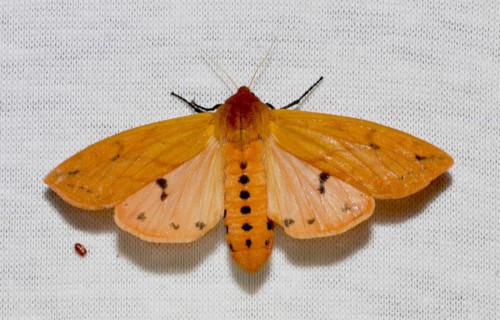
Isabella Tiger Moth Facts
- Now showing in this gathering of these 7 Magical North American Moths is the regal species that goes by the name of the Isabella Tiger Moth.
- Most notably, the term given here serves as the much more pronounceable common name for this beauty. Its scientific name, however, is that of the hard to pronounce term of Pyrrharctia isabella. Thankfully, though, the insect has others.
- This beautiful Lepidoptera, in fact, goes by several other common names. These different names include the banded woolly bear, the woolly bear, and the woolly worm. By whatever term one calls it, though, it represents a truly magnificent specimen.
- The first scientific recognition of this deceptively ordinary-seeming remarkable species occurred in the year 1797. At that time, the description occurred as the result of work done by the well known English botanist Sir James Edward Smith.
- Quite interestingly, this small moth also holds a small surprise for those just learning of it. That’s because it holds a position of moderate importance in the folklore of certain parts of its native range. This fact alone earns it a place of importance.
- The belief maintains that the relative percentage of different colors in its fur each year predicts the relative severity of the coming winter. Finally, and quite fortunately, unlike many of its relatives, the Isabella Tiger Moth appears to still have a stable population.
- The IUCN, therefore, currently does not have any listing for this species on its Red List of Threatened Species. Habitat loss could threaten it soon, however. The ongoing and escalating effects of climate change could also pose a danger in the near future.
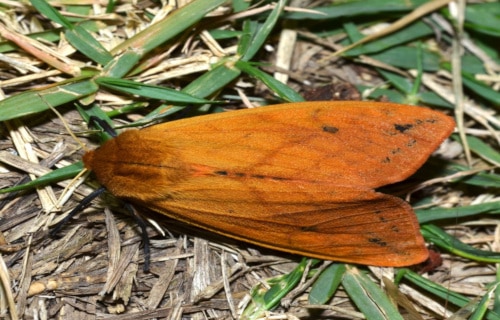
Isabella Tiger Moth Physical Description
Perhaps most notably of all, the gorgeous Isabella Tiger Moth, like many related creatures, displays a moderate degree of sexual dimorphism. In the case of this species, that shows itself in terms of coloration. This principle, in fact, appears in many species of moth.
The adult males of this incredible arthropod generally display a primarily pale orange color. Females, meanwhile, typically display a predominantly rosy color. In terms of physical size, though, the genders of this marvelous insect remain essentially identical.
The overall wingspan, however, does vary somewhat significantly, without apparent regard for gender. As a result, mature adults attain a wingspan ranging from about 1.77 – 2.56 in (4.5 – 6.5 cm). This trait also distinguishes it from most of its related species.
The larval form of this fascinating invertebrate, though remain its best known form. That holds true because of the extreme size these attain, at least compared to similar creatures. Other species, such as the Regal Moth, also display this surprising physical trait.
This part of its life cycle averages about 2.25 in (5.7 cm) in length. Generally, the larvae display a covering of dense fur. This stage of the Isabella Tiger Moth typically presents a reddish-brown fur in the middle of the body, and black on the front and back of the body.
- Kingdom: Animalia
- Phylum: Arthropoda
- Class: Insecta
- Order: Lepidoptera
- Family: Erebidae
- Genus: Pyrrharctia
- Species: P. isabella
Isabella Tiger Moth Distribution, Habitat, and Ecology
Quite fortunately, the wonderful Isabella Tiger Moth inhabits a comparatively broad range of the globe. More precisely, however, this zone of habitation consists of parts of North America. More specifically, it mainly appears throughout most the continental United States.
The insect also inhabits the southern portions of Canada, though. Scattered individuals also appear as far north as the Arctic region, however. The small but amazing invertebrate further displays a relatively high degree of adaptability in its choice of habitats.
It is this versatility that helps it survive in areas of extreme cold. That holds true due to the fact that it appears in virtually any area with sufficient vegetation. It nonetheless demonstrates a decided preference for various trees, grasses, and certain flowers.
The larval form of the Isabella Tiger Moth typically emerges from the eggs in the late Fall season. Then, the caterpillar stage spends the winter quiescent, literally freezing solid. It then survives the freezing process due to an amazing evolutionary adaptation.
This astounding development of evolution involves the production of a natural protective chemical that prevents destruction of its tissues during the freezing process. Upon emerging from this self-imposed stasis in the spring, the caterpillar feeds voraciously.
At that time, the arthropod eats virtually any plant it finds. Individuals nonetheless do seem to prefer various grasses, as well as the foliage of trees such as birches, elms, and maples. Adults, however, only feed on the nectar of different types of flowers.
Rosy Maple Moth
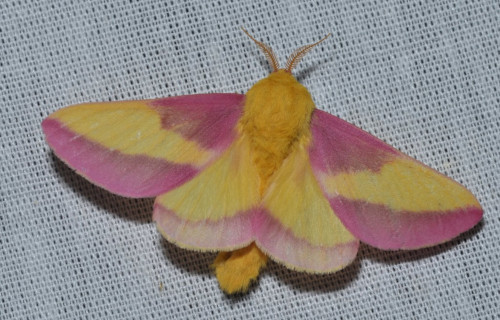
Rosy Maple Moth Facts
- Next up among our choices for inclusion in this compendium of 7 Magical North American Moths we give you the Rosy Maple Moth.
- This magnificent variety of Lepidoptera mainly goes by this intriguing common name. Its scientific name, meanwhile, remains quite complicated to pronounce. That’s because professional researchers know it by the name of the Dryocampa rubicunda.
- By either of these distinctive terms, however, it represents a truly beautiful work of Nature and evolution. The Danish zoologist Johan Christian Fabricius made the first official recognition of it as a separate and distinct species. This he did in the year 1793.
- In some portions of its habitat range, though, its caterpillar stage is better known than the adult one. That, however, holds true for unfortunate reasons. This stage, commonly known as the greenstriped mapleworm, ranks as a major pest to some individuals.
- Quite fortunately, it also appears to still be maintaining a sizeable and sufficient population base. This trend further seems to hold true throughout the entirety of its natural range. The IUCN, therefore, presently has no listing for it on its Red List.
- The breathtaking Rosy Maple Moth nevertheless must be considered to facing at least some risk. In this, it mirrors most species today. Habitat loss naturally forms a threat. The greatest threat it faces, however, must be considered to be that of climate change.
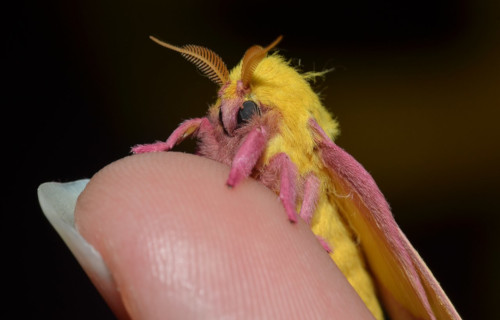
Rosy Maple Moth Physical Description
The fabulous Rosy Maple Moth perfectly demonstrates the fact that size has no bearing on beauty in Nature. That’s because the delicate marvel actually ranks as the smallest of what’s known as the silk moths. Compared to moths overall, though, it’s an average-sized species.
The small wonder also displays a moderate degree of the physiological characteristic of sexual dimorphism. In its specific case, however, this trait manifests itself in terms of physical size, rather than appearance. More specifically, females grow slightly larger.
The larger females, as a result, attain a wingspan measuring as much as 2 in (5 cm). The smaller males, meanwhile, typically only attain a wingspan averaging roughly 1.25 – 1.75 in (3.2 – 4.4 cm). That degree of size difference isn’t unusual among moths, though.
It’s in its pure appearance, however, that the awesome Rosy Maple Moth distinguishes itself from the crowd. That’s due to its remarkable pattern of colors. The body and hindwings usually manifest as bright yellow. The legs and antennae mainly appear as reddish-pink.
The forewings of the lovely Lepidoptera further enhance its amazing appearance, though. These usually display as bright pink, with a yellow band running across the middle portion. Various white and cream-colored patterns also occur sometimes, however.
- Kingdom: Animalia
- Phylum: Arthropoda
- Class: Insecta
- Order: Lepidoptera
- Family: Saturniidae
- Genus: Dryocampa
- Species: D. rubicunda
Rosy Maple Moth Distribution, Habitat, and Ecology
The marvelous Rosy Maple Moth evolved as native to a comparatively extensive portion of the globe. In point of fact, it developed naturally across a respectable portion of the Northern Hemisphere. More precisely, it appears endemically to parts of North America.
There, it makes its home in portions of the countries of the United States and Canada. Even within that zone of habitation, though, its population appears in only certain portions of the countries. This range further appears to be stable and consistent.
In the United States, it lives mainly in the eastern sections. That extends from Florida west to Michigan, Indiana, Texas, Kansas, and Nebraska. In Canada, meanwhile, it appears in the southern regions. This includes Ontario, Quebec, New Brunswick, and Nova Scotia.
The intrepid small arthropod even extends its range to the equally stunning Prince Edward Island. Wherever it makes its home, though, the marvel of Nature displays strong preferences for its choice of habitat. This preference mainly includes deciduous forests.
The incredible Rosy Maple Moth draws part of its common name from its feeding habits. That’s due to the fact that it principally feeds on Maple trees. The intriguing species further appears to be particularly fond of the Silver Maple, Red Maple, and the Sugar Maple.
Like most of its relatives, it evolved as nocturnal in nature, except during mating season. In the wild, individuals sometimes live as long as 9 months. For the moment, researchers know very little about the rest of the lifecycle of this truly fascinating invertebrate.
Southern Flannel Moth
Southern Flannel Moth Facts
- Closing out this article about 7 Magical North American Moths is the remarkable product of evolution named the Southern Flannel Moth.
- This gorgeous variety of Lepidoptera most commonly goes by this intriguing name within its natural range. It’s actually better known for its immature stage, however. This stage of its life cycle, in fact, has multiple names that it goes by.
- These multiple terms include the asp, Italian asp, puss caterpillar, opossum bug, woolly slug, puss moth, tree asp, and asp caterpillar. Its scientific name, however, remains quite hard to pronounce. That’s because it’s Megalopyge opercularis.
- While it remains better known for its larval form, the amazing invertebrate nevertheless ranks as an extremely beautiful insect. Sadly, though, it’s not widely known. This unfortunately leads to a lack of understanding of its place in Nature.
- While its beauty makes one want to pet it, doing so provides a rather unpleasant experience. That’s due to an evolutionary protective measure. The lovely fur conceals numerous spines containing a toxin that produces very unpleasant effects.
- For the moment, the delicate Southern Flannel Moth appears to be maintaining a sizeable population. This also seems to be remaining relatively stable across its range. The IUCN, therefore, currently has no listing for it on the organizations’ Red List.
- The magnificent arthropod nevertheless must be considered to facing at least some risks to its continued existence. Habitat loss understandably ranks as one of these. Its greatest threat, though, undoubtedly comes from climate change.
Southern Flannel Moth Physical Description
The stunning Southern Flannel Moth is another of those creatures that prove size remains irrelevant to beauty. That’s due to the simple fact that it’s a comparatively small Lepidoptera. It also displays a slight degree of the physiological trait of sexual dimorphism.
In its particular case, this manifests itself in terms of sheer physical size. More specifically, the females attain a somewhat larger size than the males of the species. Males typically attain a wingspan of 1 in (2.4 cm). Females meanwhile, reach a span of up to 1.5 in (3.6 cm).
Otherwise, both genders present roughly the same overall appearance. The fur of the insect varies significantly in color among individuals, however. This further occurs regardless of gender. Yellow predominates, though, with shades of brown and black mixed in.
The overall appearance of the Southern Flannel Moth can perhaps best be described as fuzzy. That’s due in part to the fact that even the short legs typically display large quantities of small hairs. The feet even have a covering of fur, usually a dark black in color.
- Kingdom: Animalia
- Phylum: Arthropoda
- Class: Insecta
- Order: Lepidoptera
- Family: Megalopygidae
- Genus: Megalopyge
- Species: M. opercularis
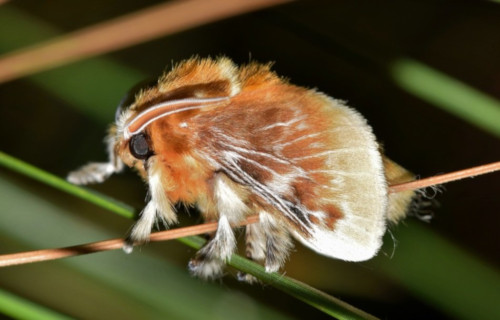
Southern Flannel Moth Distribution, Habitat, and Ecology
The gorgeous yet dangerous Southern Flannel Moth inhabits a highly specific portion of the country of the United States, in North America. Specifically, the marvel inhabits a range that extends from New Jersey to Florida, and then west to Arkansas and Texas.
The creature also appears across a narrow but extend portion of the continent elsewhere. That’s because it also appears in parts of Mexico and Central America. The greatest concentration of the insect, however, occurs in western and central parts of Texas.
For its habitat, the lovely Lepidoptera seems to have evolved very specific preferences. This wonder of evolution, in fact, primarily prefers various trees, such as elms, wild plum, and oaks. Yet it also frequently occurs on garden plants such as ivy and rose bushes.
This moth usually has two broods per year, under most conditions and in most parts of its range. Occasionally, though, it has three, depending on its exact location and local climate. Mating typically happens on the first night of its emergence from the cocoon.
Following that, the female commonly lays her numerous eggs on various available twigs and leaves. After emerging, the larvae feed quite voraciously. These further do so on a wide variety of plants, but most commonly on citrus, oak, and elms trees.
The spines of the Southern Flannel Moth contain a powerful toxin used for self-defense. Upon exposure to human skin, a reaction is almost instantaneous. Symptoms include burning, swelling, headache, nausea, rashes, blisters, and sometimes chest pain.
7 Magical North American Moths
We hope that each of you enjoyed reading, and hopefully learning from, this article we’ve written about these 7 Magical North American Moths. It’s also our hope that doing so has left you with either a new or renewed appreciation for such wonders of Nature.
Unfortunately, however, many of their kindred around the world now find themselves facing strong threats to their continued existence as a species. Many of those dangers, in fact, stem from the actions of mankind. We must do all we can to protect and preserve them all.
Check out our other articles on 5 Woefully Rare Woody Shrubs, The Mighty Tornado, 3 Tantalizing Wonders of Tanzania, Spectacular Dolphins Throughout Our World
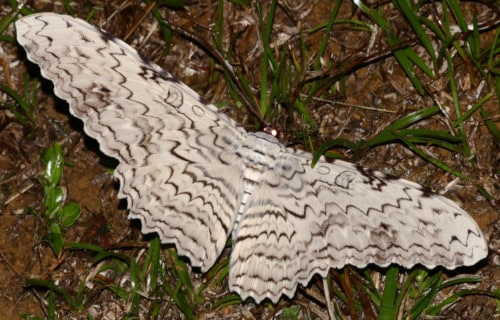
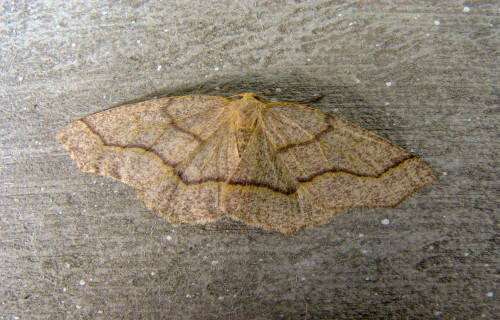
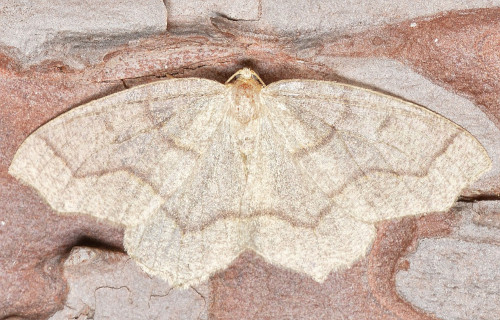
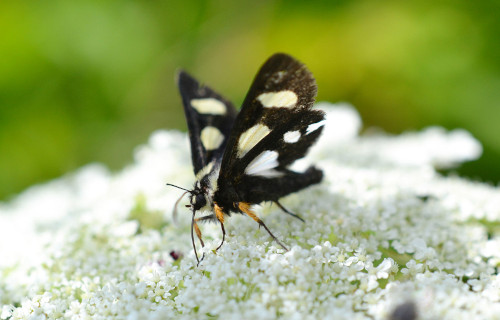
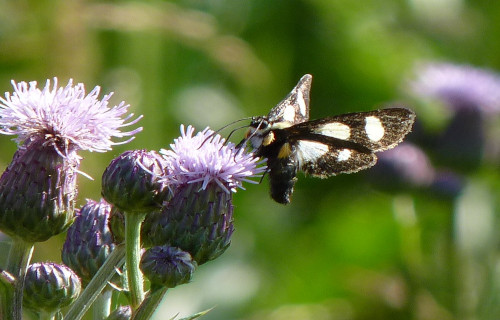
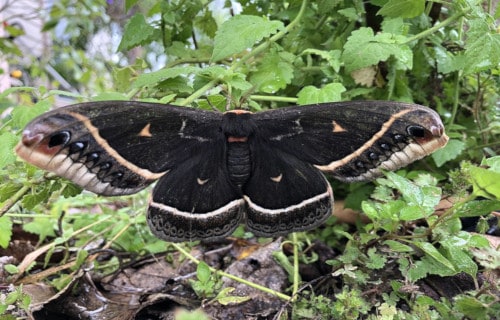
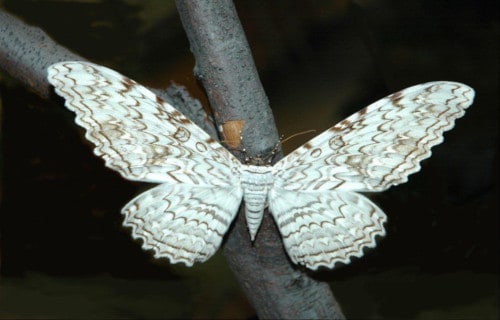
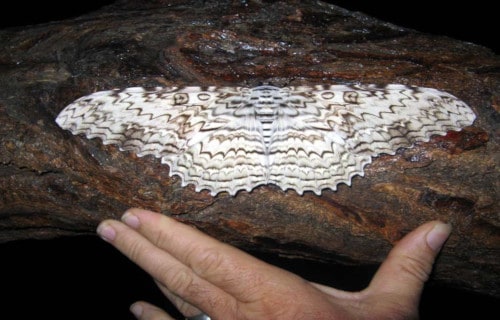
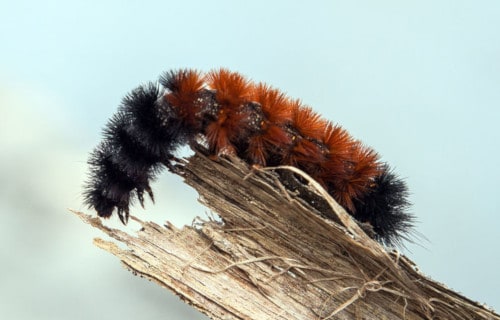
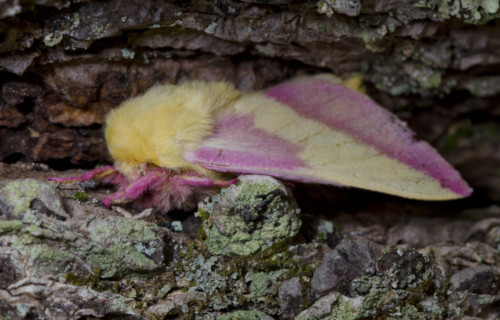
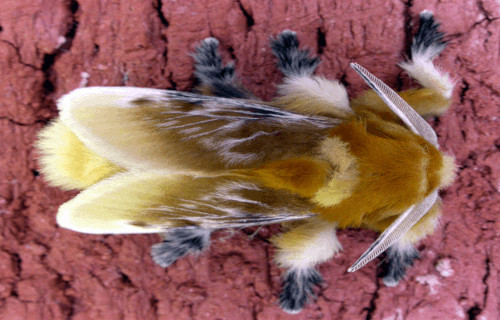
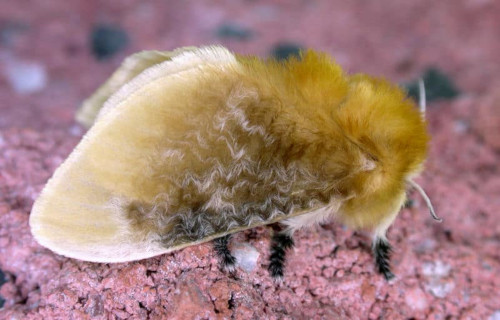









Leave a Reply